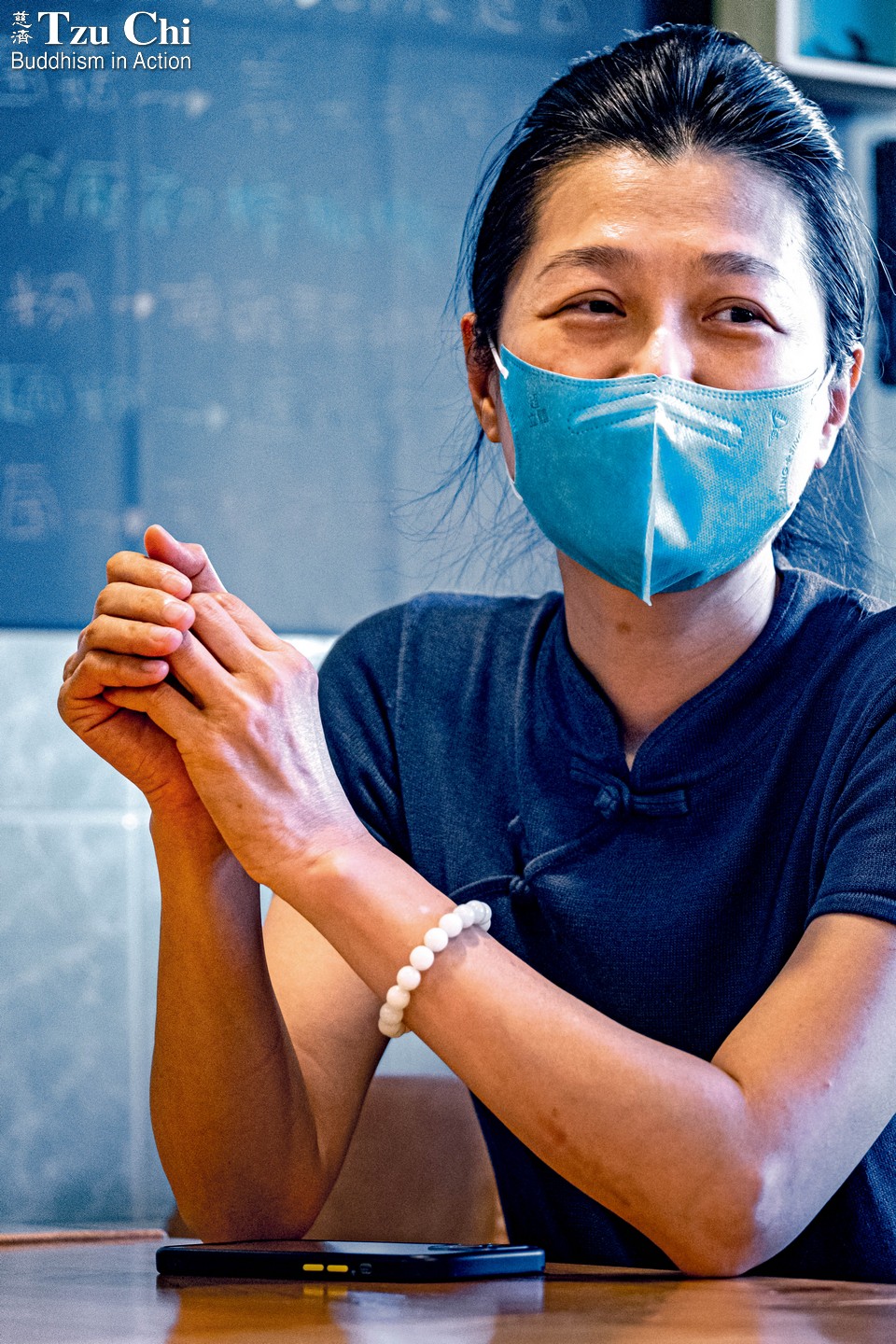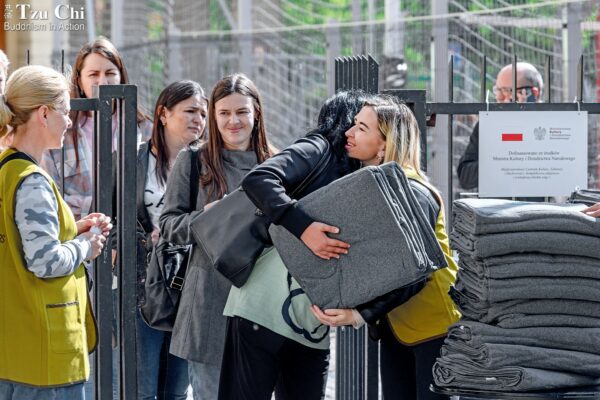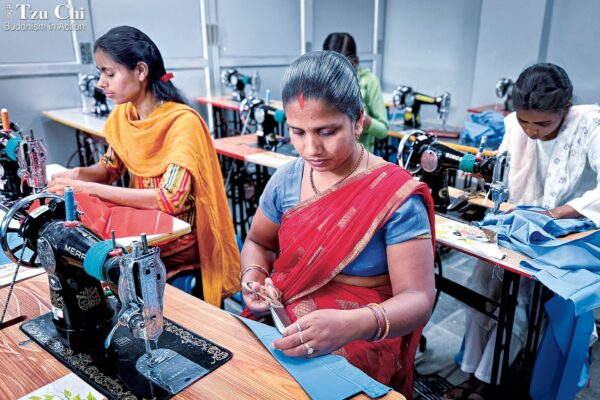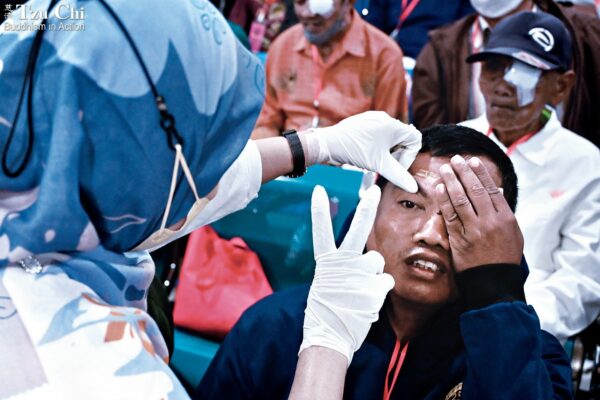Narrated by Ou Yu-jing
Interviewed and compiled by Liao Zhe-min
Edited and translated by Wu Hsiao-ting
Photos by Huang Xiao-zhe
Tzu Chi volunteers invited six plant-based restaurants to work with them to implement a whole-plant diet program. Half of the restaurants declined the opportunity after they were briefed on the requirements. The other three accepted the challenge, but it wasn’t easy producing food that met the criteria.

Ou Yu-jing, a Tzu Chi volunteer in Kaohsiung, helped launch the 21-day health challenge in Taiwan.
In 2011, Tzu Chi put on a musical adaptation of the Compassionate Samadhi Water Repentance, a Chinese Buddhist text. Volunteers taking part in the performances were required to observe a vegetarian diet for at least 108 days to help purify their hearts and bodies. The diet helped ensure they could present the adaptation with a most sincere and pure heart. I’ve been helping promote vegetarianism as a Tzu Chi volunteer ever since. For example, that year I provided vegetarian lunches for employees at my company for 108 days.
Early last year, my father was hospitalized for a serious illness. He stayed in the intensive care unit for more than a month. After he recovered and was discharged, he decided to hold vegetarian banquets for 20,000 people. Because of his extended hospitalization, he didn’t realize that public gatherings had been forbidden due to the pandemic. I explained the situation to him and said that medical professionals and other front-line workers had been working hard since the epidemic broke out to help fight the disease. I suggested that instead of holding vegetarian banquets for 20,000 people, we provide 20,000 vegetarian boxed meals to medical professionals, police officers, firefighters, and government workers to thank them for their hard work. My father agreed.
That’s how I began working with other volunteers to launch a vegetarian meal service. I asked dieticians to design menus for the project to ensure that our meals were healthy, and I found 11 restaurants that were willing to work with us to prepare the meals. I developed good ties with many chefs as a result of this project. Other volunteers across Taiwan have organized similar meal services for front-line workers since COVID-19 started.
As I looked back on that project, however, I began to wonder whether our efforts to promote vegetarianism were effective. Were people actually switching to a vegetarian diet just because they ate a few boxed meals we sent out? That’s why my interest was piqued when I learned in June this year about the Healthier Me 21-Day Challenge launched by our volunteers in Malaysia.
I’m very willing to try new things. I once even took a week’s leave from my job to take part in a camp that was designed to boost one’s health via a diet plan. Volunteers who started the Healthier Me 21-Day Challenge were also out to help people become healthier via a diet plan. But unlike the camp I attended, one could go about their daily routines as usual while keeping such a diet. A volunteer said to me that the health challenge looked like an upgraded version of our meal service. I agreed and decided that such a challenge shouldn’t be too difficult to organize. Thus, I set to work.

Ou (middle) and her fellow volunteer Cai Ya-chun (right) often visit restaurants participating in the diet program to talk about the menus for the program and about preparing ready-to-heat packaged meals for participants.
Harder than imagined
A few days later, I invited people from six restaurants to meet online with me and with volunteers in Malaysia to learn more about the health challenge. Much to my surprise, some chefs balked at joining when they learned about the restrictions they’d have to follow in preparing the meals. Such restrictions included: there could be no frying, deep-frying, or stir-frying, and only minuscule amounts of cooking oil, salt, and sugar were allowed. In addition, processed food was forbidden. One chef said immediately, “There is no way my restaurant can do this.” Another said the next day, “What you are proposing sounds a lot like kaiseki ryori [a Japanese haute cuisine]. It’s simply too difficult for us.”
In the end, only three restaurants agreed to take on the challenge.
I was very grateful to those restaurants for coming on board. I was also moved to see participating chefs sharing tips with each other to develop dishes that met our criteria and that tasted good. For example, Hu Cai-bin (胡財賓), a Japanese food chef, once asked in our group chat: “How do you cook brown rice to make it taste better?” Dileepkumar Vasantrao, a chef of Indian cuisine, responded by phoning him and sharing some tips with him. Afterwards, Hu said that his brown rice had become tastier.
Another similar example left a deep impression on me. That time, Hu said, “Oh, no! Japanese cuisine emphasizes the use of sugar, but no [processed] sugar is allowed in our boxed meals. We have to use natural ingredients instead. What should I do?” Vasantrao immediately told him: “My mom taught me that if you cook onions longer, you bring out their sweet flavors. You don’t need to add a single drop of water.” A few days later, Vasantrao made a video demonstrating how he simmered his onions to bring out the natural sugar in them.
When he first joined our program, chef Hu often encountered challenges trying to prepare the type of food we wanted. Due to the program’s prerequisites, he couldn’t use many of the sauces and condiments he was accustomed to using as a Japanese food chef. He felt greatly constrained. One time I asked him if he could make some sushi for our program. He looked a little stumped and said that vinegar was needed to prepare the rice for sushi, but because most commercial vinegar has a high sugar content, it couldn’t be used in our program. When other chefs learned about the difficulty Hu was experiencing, one of them told him in our group chat: “My mom told me you can use lemon to replace vinegar.” I felt so lucky and so grateful to be able to work with a group of chefs who were so willing to share what they knew with each other, who weren’t daunted by challenges, and who were willing to try and learn new things.
More than just health benefits
When program participants came to fetch their meals, I asked them, “What do you think about the meals?” or “Has your body undergone any changes?” Some told me there was too much rice in their meal boxes and that they were unable to eat it all. I told them I had a small appetite too, and like them I could never finish the rice. Then I shared my solution with them: that I’d eat only half of the brown rice, and put the other half in the freezer. Then, the next day, I would cook the leftover rice with some cashews and Chinese dates. It was a delicious way to take care of the leftovers.
Despite the comments about there being too much rice in the boxes, every participant gave very positive feedback. One even told me, just two or three days after she joined the program, that she had become lighter and more nimble, and that her bowel movements had become easier. Another participant used to have to take sleeping pills to help her go to sleep, but after eating our meals she said that she was sleeping very well now, without having to resort to medicine.
A restaurant owner joined the program too because he wanted to try the food prepared by the participating restaurants. Much to his surprise, he lost eight kilograms (18 pounds) after taking part in two rounds of the challenge. His face became leaner, and his figure improved quite a bit. I teased him about it, saying, “You’ve become quite a looker!”
I believe that the whole-plant diet we’re promoting might prove a better and more effective way of getting more people to eat vegetarian. Once people try such a diet and experience the improvement in their health and the many benefits that come with it, they’ll be more inclined to follow a plant-based diet long-term. When all is said and done, who doesn’t want to be healthier?



